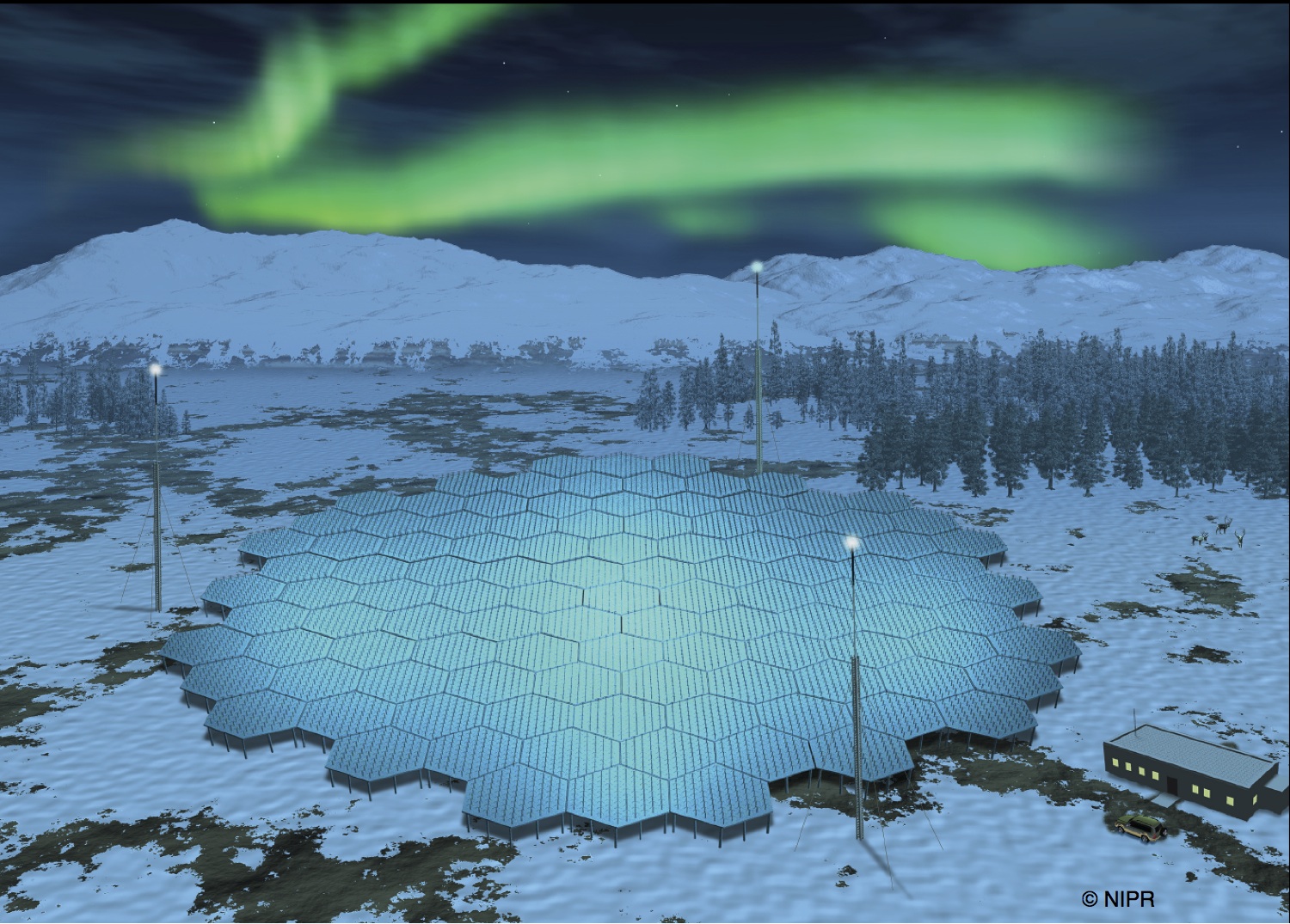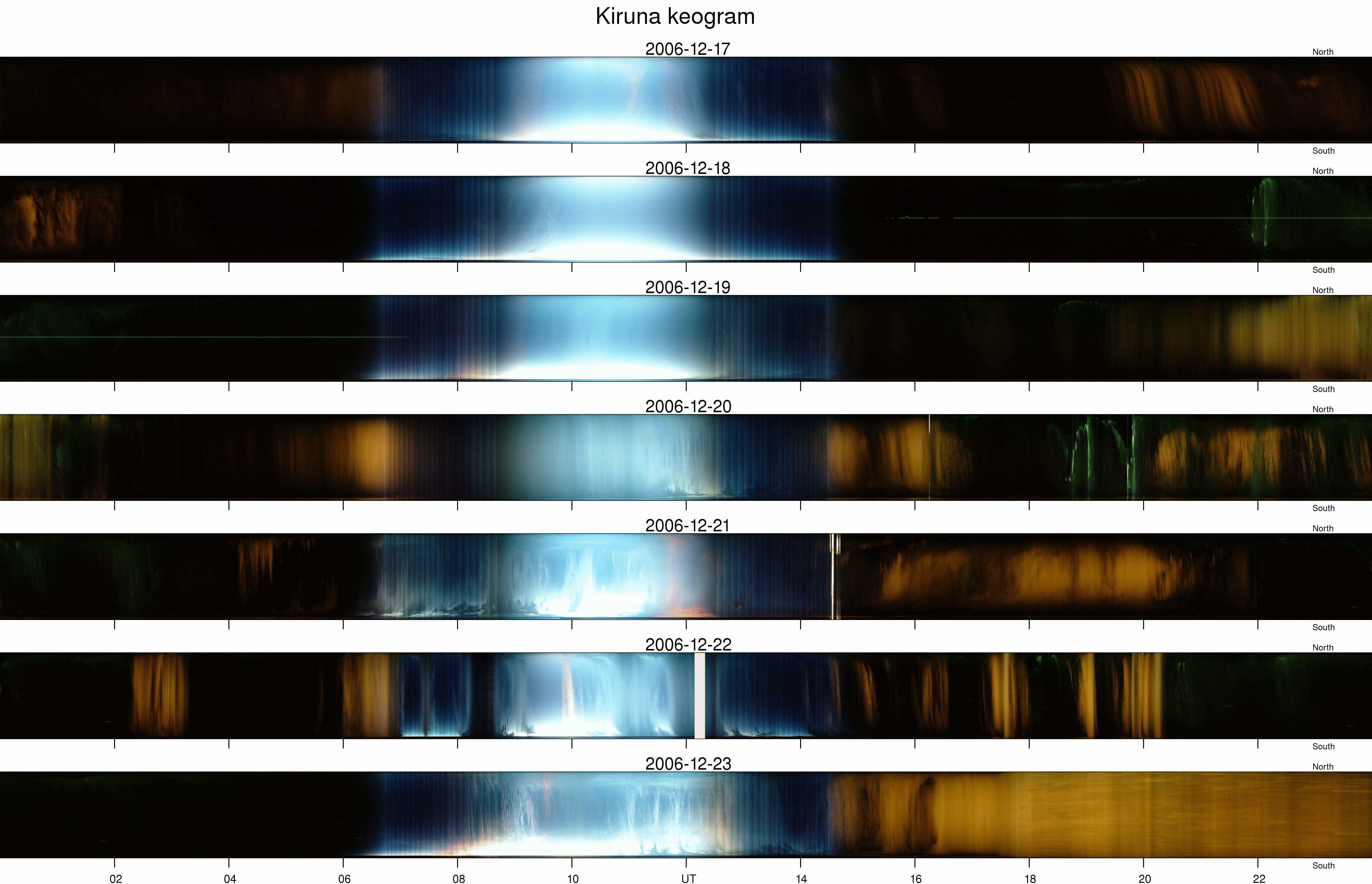Posthuman perception

Imagine you have a camera where the sensor gets illuminated line by line. This is what EISCAT (see Radar) is doing now. It’s a bit like looking at the sky with binoculars, always in the same direction. Suddenly your field of view becomes green and then slowly it becomes black again. What can you conclude? Either you conclude that you were lucky the northern lights must have appeared in the spot where you were looking and then faded away, or you can conclude that the northern lights must have come from somewhere else and moved into your field of view and out of it. You can’t distinguish between those two. There’s space-time ambiguity. You don’t know. From experience you know, but you don’t know. We only do measurements in one little spot. Moreover, because radars are pretty expensive to run, we don’t run them all the time. So we miss a lot of interesting events. That’s why we want to build EISCAT 3D, a phase array with 10 000 antennas at each of three different sites. With EISCAT 3D the image will be illuminated in one go by virtual beams, without moving tons of hardware. Everything will be digitised at a much higher time resolution, and we can change the experiment when we want to. We can have instruments on a satellite, and while you sit with your computer on your sofa at home you can reprogram it and change what you get. Instruments become cheaper, smaller and more available, so you can put more of them out there, so the data amount starts to grow. It becomes a Big data thing. You need a supercomputer to process it, especially if you want to do it in realtime. If you record that much data you also need to be able to correlate and analyse it. So we’re looking into artificial intelligence in image recognition.
– Thomas Ulich, EISCAT facility leader in discussion with HH and AM, 2018, Sodankylä
Although machinic vision occurs through data and datafication, and can essentially be understood as post-optical, machinic vision and Big data are – similar to the microscope or telescope – often portrayed as enabling enhanced vision through the rendering visible of existing but invisible processes and effects. As media scholar Orit Halpern has pointed out, vision encompasses its permutations: visualisation, visuality and visibilities. Machinic vision should therefore not be understood in isolation but as a technical condition still relying on historically contextualised material-semiotic discourses and practices – such as ideologies and structural inequalities embedded in optical metaphors – for making “the inhuman, that which is beyond or outside sensory recognition, relatable to the human being” (Note 1). In extension, as Big data offers ways of seeing with nonhuman life, it also becomes co-constitutive of vision, provoking transformations in how humans know and perceive, and thereby enables novel tactics of governance and power. In her critique against algorithmic governmentality legal scholar Antoinette Rouvroy has pointed out that processes of datafication operate through what is capturable and calculable – from behaviour rather than subjectivity, and from what is effectuated, while unrealised dreams remain ignored (Note 2). By framing governance as an ongoing and technical process of responsiveness without seeking to understand causality this computational turn bypasses human interpretation and evaluation (processes of meaning-making, transcription or representation, institutionalization, convention and symbolization) accepting the world (with its social, economic and environmental issues) as it is.
On the other hand, drawing on Walter Benjamin’s notion of the optical unconscious, enabled by photography and visual technologies such as slow motion and close-ups, that brought “to light entirely new structures of matter” and in so doing changed and affected the material reality of the worlds it offered access to, as well as Astrida Neimanis’ “ethics of unknowability”, visual and cultural theorist Daniela Agostinho proposes a speculative reimagining of datafied vision “conceived differently, perhaps not only as an instrument of sensorial enhancement, calculation and control, but as generator of new possibilities, or at least a site where this openness to the unknown can be articulated” (Note 3). Alternatively, are there other non datafied posthuman visions of the atmosphere to be envisioned?
Note 1: O. Halpern, Beautiful Data: A History of Vision and Reason since 1945, Durham & London, Duke University Press, 2015.
Note 2: A. Rouvroy, "The end(s) of critique: Data behaviourism versus due process,” in Privacy, Due Process and the Computational Turn. Philosophers of Law Meet Philosophers of Technology, eds. Mireille Hildebrandt and Katja de Vries (New York: Routledge, 2013), 143–168.
Note 3: D. Agostinho, “The Optical Unconscious of Big Data : Datafication of vision and care for unknown futures.” In Big Data & Society. 2019; Vol 6, Nr. 1: 1-10.
On the other hand, drawing on Walter Benjamin’s notion of the optical unconscious, enabled by photography and visual technologies such as slow motion and close-ups, that brought “to light entirely new structures of matter” and in so doing changed and affected the material reality of the worlds it offered access to, as well as Astrida Neimanis’ “ethics of unknowability”, visual and cultural theorist Daniela Agostinho proposes a speculative reimagining of datafied vision “conceived differently, perhaps not only as an instrument of sensorial enhancement, calculation and control, but as generator of new possibilities, or at least a site where this openness to the unknown can be articulated” (Note 3). Alternatively, are there other non datafied posthuman visions of the atmosphere to be envisioned?
Note 1: O. Halpern, Beautiful Data: A History of Vision and Reason since 1945, Durham & London, Duke University Press, 2015.
Note 2: A. Rouvroy, "The end(s) of critique: Data behaviourism versus due process,” in Privacy, Due Process and the Computational Turn. Philosophers of Law Meet Philosophers of Technology, eds. Mireille Hildebrandt and Katja de Vries (New York: Routledge, 2013), 143–168.
Note 3: D. Agostinho, “The Optical Unconscious of Big Data : Datafication of vision and care for unknown futures.” In Big Data & Society. 2019; Vol 6, Nr. 1: 1-10.

A keogram (derived from ‘Keoeeit’ the Inuit-word for aurora borealis) a time-versus-latitude plot creating a summary image of individual all-sky images captured during night.